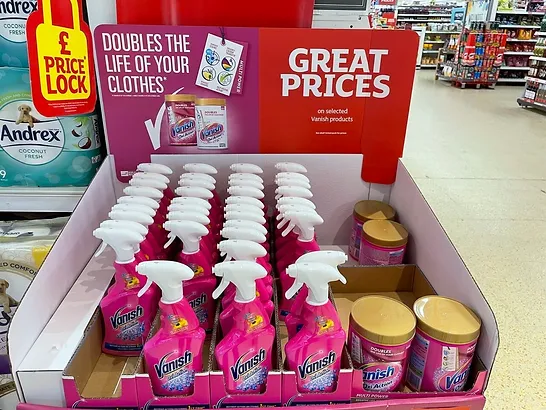10 Lessons from 2022... and what they mean for 2023
1. Prices keep rising
Gas prices continue to rise and are explicably linked to production costs.
As our energy bills continue to go up, so do food and non-food groceries costs.
Add to this the fact that interest rates are at their highest in 20 years, we can expect more people to struggle with the cost of their mortgages and rents.
IGD and Kantar have predicted that prices will continue to rise in the first half of 2023, so it’s key that we continue to monitor relative pricing and shopper behaviour.
2. Aldi & Lidl keep gaining share
Back in 2008, Aldi & Lidl had a combined market share of 4.4%.
Following a drop in share during the pandemic, both retailers have returned to their previous growth trajectory hitting a record-breaking combined share of 16.7%.
Aldi have even grown beyond Morrisons to take their place as the UK’s 4th biggest supermarket.
3. The Price War continues
Trying to compete with the likes of Aldi and Lidl means the more established British grocers are obsessed with price.
As retailers prioritise Every Day Low Prices (EDLP) and discounter price matching, we’ve seen levels of promotional sales drop dramatically.
Tesco and Sainsbury’s continue their “Aldi Price Match” campaigns, while Asda target Home Bargains with their price matching across Non-Food products.
While Price Matching has an important role in the UK grocery environment, retailers occasionally need reminding that value means different things to different people.
4. Own Label helps shoppers save money
As shoppers try different strategies to save money, Own Label products are outperforming brands across many grocery categories.
Retailers’ Own Label products range from their premium propositions (Tesco Finest, Sainsbury’s Taste the Difference) down to their value propositions…
The value ranges only account for 3% of the market but as retailers invest, sales are growing (+46% in November).
5. Loyalty Schemes made their big comeback
Asda’s new loyalty program ‘Asda rewards’ was unmissable in store this year – “pounds, not points” taps into our ever-increasing need to save money.
The app is gamified in an attempt towards making shopping fun, but it has left some shoppers confused.
Asda can learn a few things from Tesco when it comes to keeping the benefits easy to understand.
Adding ‘Clubcard Prices’ to their repertoire of campaigns was a genius move for Tesco.
Not only did shoppers love the immediate savings, it gave us a reason to scan our Clubcard, helping Tesco get a better understanding of our shopping behaviour.
This mechanic is nothing new as retailers like Sainsbury’s and Superdrug have been giving their loyalty card holders exclusive prices for years.
Tesco’s masterstroke was putting it central to their value campaign so shoppers could not miss it - or misunderstand it.
6. Online shopping is here to stay
2022 has not been the year for the online channel, as sales and share have dropped vs. 2021.
eCommerce does continue to play a key role as share remains higher than pre-Covid levels and IGD predict that it will continue growing to 2027 and beyond.
7. Sustainability needs our attention again
As brands and as shoppers, our priorities have been elsewhere in 2022.
The climate crisis hasn’t gone anywhere - There’s currently more carbon dioxide in our atmosphere than at any time in human history.
Brands and retailers need to work together to make it easier for shoppers to make more sustainable choices.
8. HFSS Regulations will impact category sales
After years of discussion and preparation, the government has delayed some HFSS (High Fat, Salt & Sugar) restrictions in light of the increasing cost of living.
In effect since October 2022:
HFSS promotions in prominent in-store locations: store entrances, aisle ends (e.g. gondola ends, FSDUs) and any area within 2 metres of a till point or self-checkout area.
Early signs show an overall 3.1% year-on-year drop in volume for categories affected by these changes - a faster rate of decline than non-legislation categories.
What was delayed?
Clampdown on junk food advertising (delayed to January 2024)
Ban on in-store promotions for high fat, salt & sugar items
(delayed to October 2023).
The gradual introduction of these restrictions will make it easier for analysts to understand the impact.
9. We need to add value beyond price
Value has always and will always be important to shoppers, but value means different things to different people.
As saving money becomes a bigger priority, some shoppers will focus on absolute price while others will look at other strategies to save money.
Shoppers will look to promotions and bigger packs to save money.
Brands are also looking at other more creative ways to add value beyond price by focusing on the quality of their product.
10. Eating out... but not as we know it
The Out of Home channel thrived in 2022 as we went back to our old habits.
Cost of Living concerns mean that we look to more affordable ways to treat ourselves when it comes to dining out.
Full-service restaurants have shown strong growth this year, but it’s the Quick service outlets who are winning overall. Costa, Starbucks and Greggs have gained more shoppers than any other outlet.
Meal delivery services also remained popular this year, with 36% of the population ordering at least 3 times a month. There is still plenty of headroom for growth, especially when you consider that 40% of households in Asia use a meal delivery service more than once a week!
So what does all of this mean for 2023?
It's likely shoppers will continue to look for ways to save money, whether that's cutting back, switching retailers or switching to cheaper products.
The best thing we can do is to stay close to our consumers, and understand how they are feeling and what we can do to help.
December 2022


